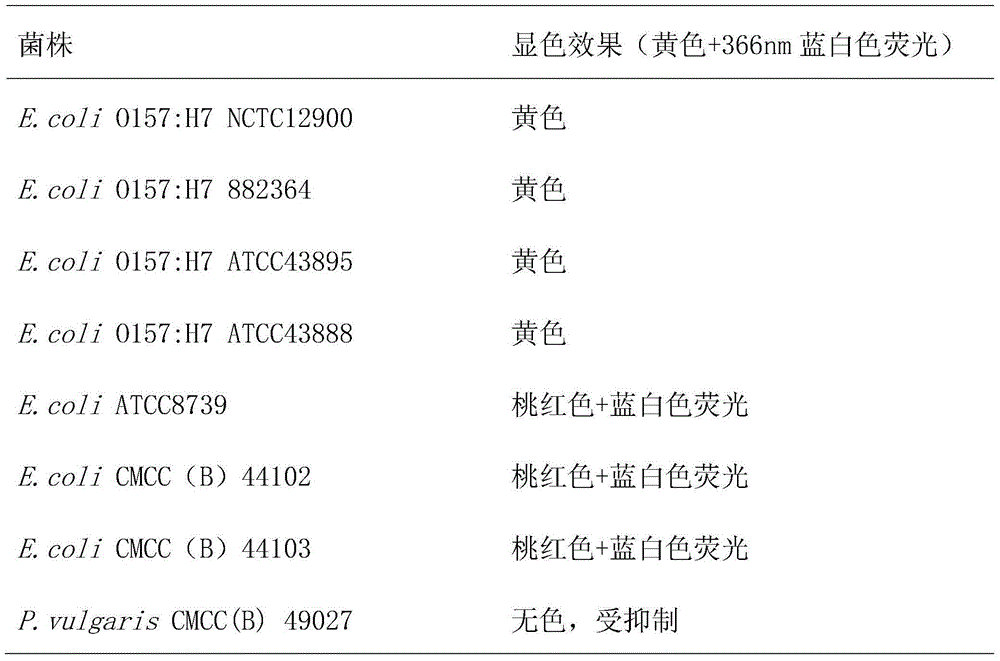Chromogenic medium used for detecting escherichia coli O157:H7
A chromogenic culture medium, O157 technology, applied in the determination/inspection of microorganisms, biochemical equipment and methods, etc., can solve the problems of no Escherichia coli, false positive of chromogenic culture, etc.
- Summary
- Abstract
- Description
- Claims
- Application Information
AI Technical Summary
Problems solved by technology
Method used
Image
Examples
Embodiment 1
[0039] A chromogenic medium for detecting Escherichia coli O157:H7, each 1000mL medium contains 10g of agar, 10g of peptone, 5g of yeast extract, 5g of sodium chloride, 15g of sorbitol, 5g of inositol, and 0.1 g, 5-bromo-4-chloro-3-indole-β-galactose 0.1g, 4-methylfanone-β-D-glucuronide 0.1g, isopropyl-β-D-thio Galactopyranoside 0.1g, ox bile salt 1.5g, potassium tellurite 2mg, cefixime 0.04mg.
Embodiment 2
[0041] A chromogenic medium for detecting Escherichia coli O157:H7, each 1000mL medium contains 10g of agar, 10g of peptone, 5g of yeast extract, 5g of sodium chloride, 15g of sorbitol, 5g of inositol, and 0.1 g, o-nitrophenyl-β-D-galactoside 2g, 4-methylfanone-β-D-glucuronide 0.1g, isopropyl-β-D-thiogalactopyranoside 0.1 g, ox bile salt 1.5g, potassium tellurite 2mg, cefixime 0.04mg.
Embodiment 3
[0042] Embodiment 3 specificity experiment
[0043]E.coli O157:H7NCTC12900, E.coli O157:H7882364, E.coli O157:H7ATCC43895, E.coli O157:H7ATCC43888, E.coli ATCC8739, E.coli CMCC(B)44102, E.coli CMCC(B) 44103, P. vulgaris CMCC (B) 49027 and other 8 kinds of standard bacterial strains were respectively made into standard bacterial suspensions of appropriate concentration (concentration is 108 ~ 109 cfu / mL), respectively streaked and inoculated to the chromogenic medium prepared in Example 1. cultured at 37°C for 18-24 hours. The specificity test results are shown in Table 1.
[0044] Table 1 The specific color test results of E.coli O157:H7 chromogenic medium
[0045]
PUM
 Login to View More
Login to View More Abstract
Description
Claims
Application Information
 Login to View More
Login to View More - R&D
- Intellectual Property
- Life Sciences
- Materials
- Tech Scout
- Unparalleled Data Quality
- Higher Quality Content
- 60% Fewer Hallucinations
Browse by: Latest US Patents, China's latest patents, Technical Efficacy Thesaurus, Application Domain, Technology Topic, Popular Technical Reports.
© 2025 PatSnap. All rights reserved.Legal|Privacy policy|Modern Slavery Act Transparency Statement|Sitemap|About US| Contact US: help@patsnap.com


